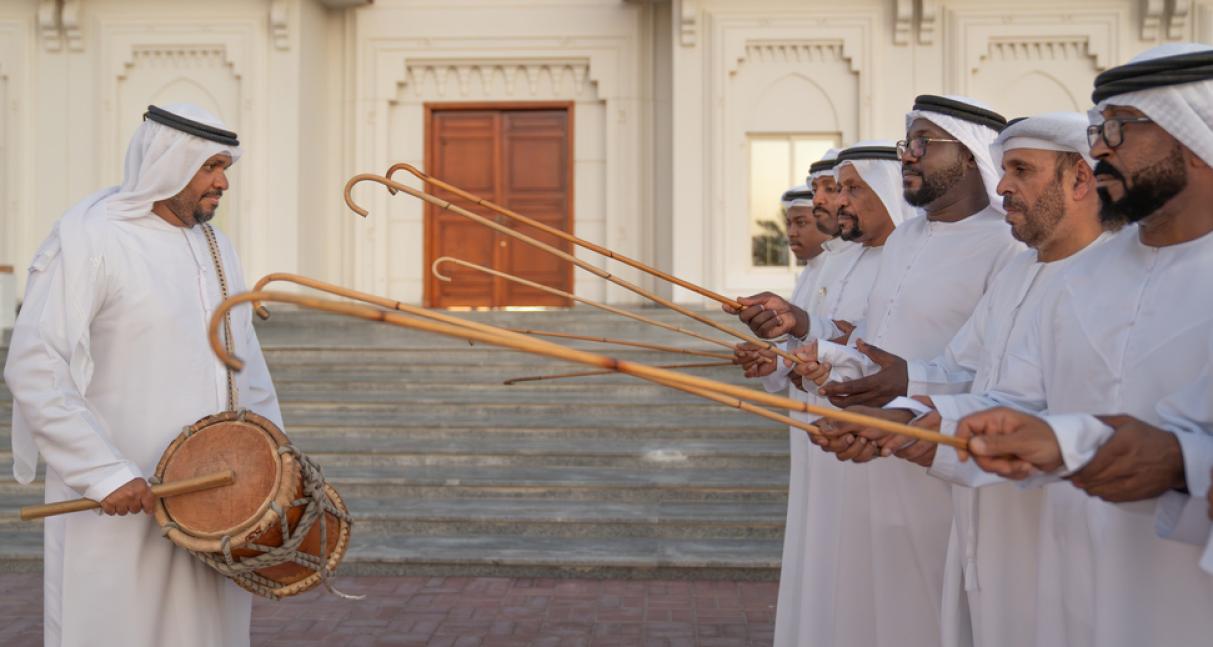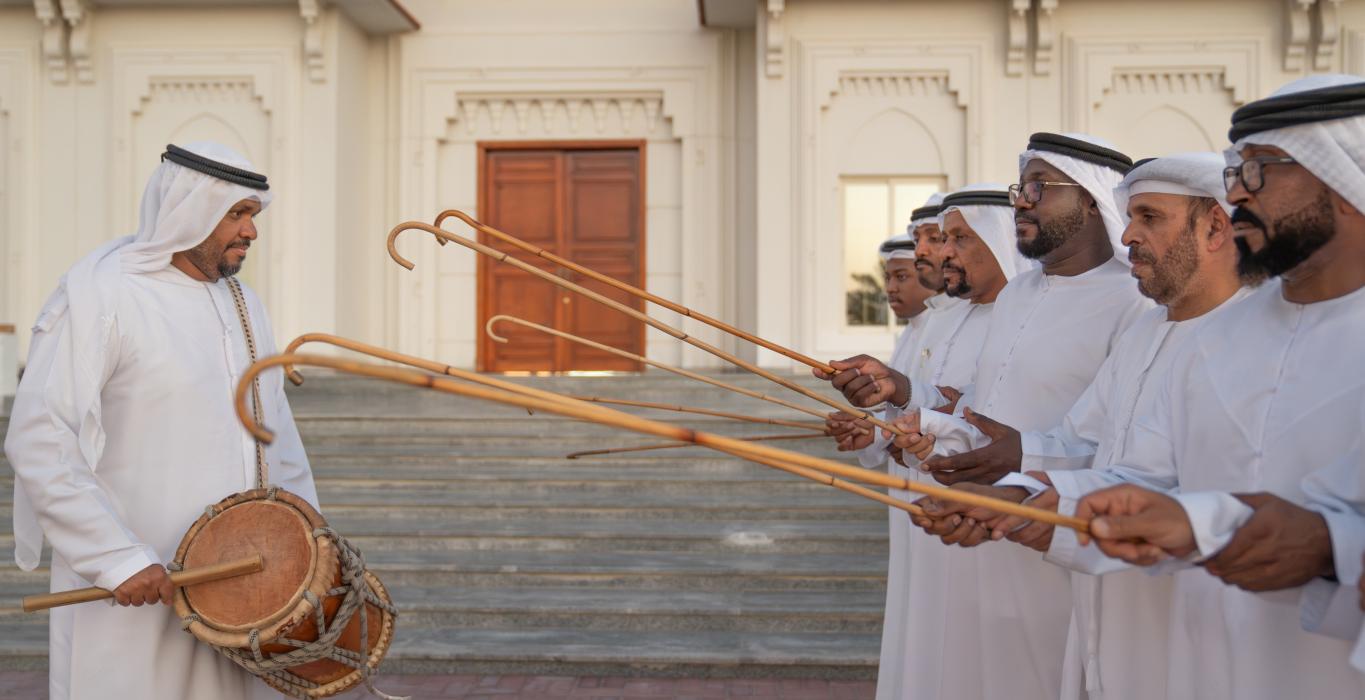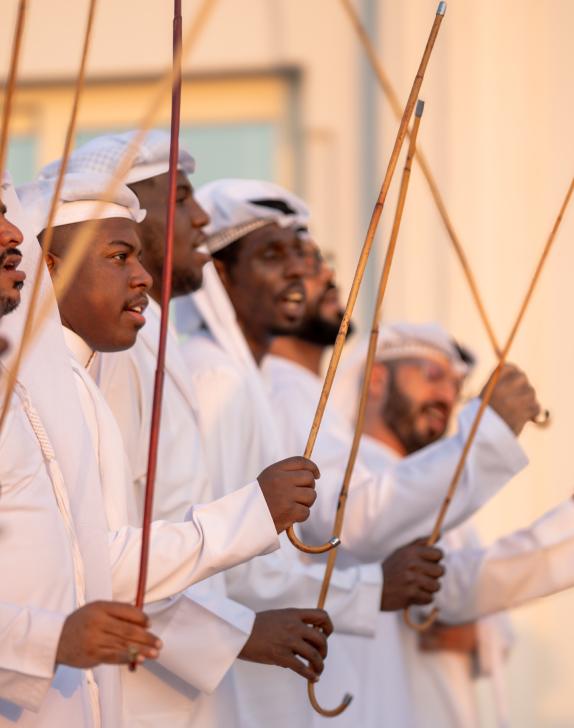
Al Ayyala

About al ayyala art
AlAyyala Art is a vibrant performance art celebrated during festivals, national occasions, and weddings, expressing pride in national values and historical moments in the UAE through famous poems and folk literature. Emirati citizens eagerly participate by forming lines to perform, known as "Al-Razifa," while swaying and waving sticks called "Al-Khayzarine" in rhythm with the music and poetry. This art form embodies a harmonious flow and has inspired popular sayings, such as: "The beating is according to the Razif."

Band Members
The most important person in this art is the leader of the troupe, known as "Al-Abu," and the poet or "Al-Shayyal," who leads the chants by reciting the poetry loudly. The poet is one of the key members of the troupe. The other members consist of the singers, or “Al-Razeef,” and the percussionists, called “Al-Daqaqah.”
The term “Daqaq” refers to those who beat the drums and other instruments, such as "Al-Raas" drum, "Al-Takhameer," and cymbals called "Al-Sama’at" or "Al-Tiran." Among these percussionists is the “Saqal,” a skilled performer on the frame drum.
Accompanying instruments
Several percussion instruments are used in Al-Ayyala, which are as follows:
It is a large drum with a deep, powerful sound.
These are smaller drums similar to Al-Raas, usually three in number.
It is a large tambourine, called “Al-Sama’a” in the UAE. Between three and five are used in the performance.
These are small, round brass cymbals that produce a ringing sound, adding to the rhythm.

Performance Method
The performance of the Ayyala art begins with the owner of the head drum who makes preliminary beats on the head called "Takhmeer”. The poet, or "Al-Shayyal," then starts reciting a verse of poetry, matching its rhythm to the beat. The poet must synchronize with the rhythm while the rest of the troupe, consisting of both the Razeef and percussionists, joins in. The percussionists accompany the Al-Raas drum, while the Razeef form two or three rows, chanting the verse in alternation, all while waving their canes and swaying in harmony with the movements of the Al-Raas drummer. When the drummer bends his left knee while playing, the Razeef follow suit, maintaining this pattern until the poem concludes.
The positions
The poetry and songs of Al-Ayyala are divided into four modes, known locally as "Maqamat Al-Ayyala," each with specific poems and melodies suited to different times of day. These modes include:
Amiri (also called Amayri)
Baddawi
Ta'osheer (or Al-Ashouri)
Nashid Al-Mashi
